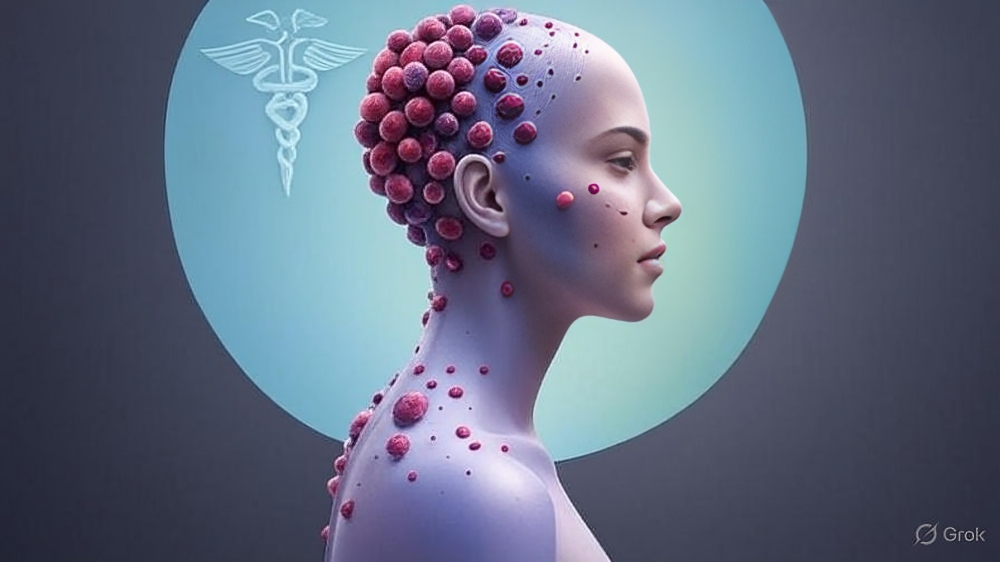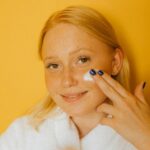Acne conglobata represents one of the most severe and challenging forms of acne that dermatologists encounter. Unlike typical teenage breakouts, this rare but serious condition can cause significant physical and emotional distress, leading to permanent scarring and disfigurement if left untreated. Understanding what acne conglobata is, recognizing its symptoms, and knowing the available treatment options can make a crucial difference in managing this complex skin condition.
What Is Acne Conglobata?
Acne conglobata (AC) is a severe, chronic form of nodulocystic acne characterized by large, painful, interconnected nodules and abscesses that develop deep beneath the skin’s surface. This inflammatory condition goes far beyond ordinary acne, creating a network of underground tunnels that connect multiple lesions together.
The condition primarily affects the face, back, chest, shoulders, arms, buttocks, and thighs. What makes acne conglobata particularly concerning is its tendency to cause extensive scarring and tissue damage that can persist long after the active inflammation subsides.
Key Characteristics of Acne Conglobata
- Interconnected lesions: Multiple nodules and cysts connect beneath the skin, forming tunnel-like structures
- Large comedones: Double or triple blackheads that appear clustered together
- Deep abscesses: Painful, pus-filled cavities that can rupture and drain
- Chronic inflammation: Persistent redness, swelling, and tenderness
- Significant scarring: Irregular, deep scars that can be disfiguring
Clinical Presentation and Symptoms
Recognizing acne conglobata early is crucial for preventing long-term complications. The condition typically manifests with several distinctive features that set it apart from other forms of severe acne.
Primary Symptoms
Nodular Lesions: Large, firm bumps that develop deep under the skin, often measuring several centimeters in diameter. These nodules are typically painful to touch and can persist for weeks or months.
Interconnected Abscesses: Unlike isolated cysts, acne conglobata creates a network of connected pus-filled cavities that can drain through multiple openings on the skin’s surface.
Comedonal Clusters: Groups of blackheads that appear fused together, creating the characteristic “double” or “triple” comedones that are pathognomonic of this condition.
Foul-Smelling Discharge: When lesions rupture or drain, they often produce a distinctive, unpleasant odor due to bacterial overgrowth and tissue breakdown.
Areas Most Commonly Affected
- Face: Particularly the jawline, cheeks, and forehead
- Back and shoulders: Often the most severely affected areas
- Chest: Can extend across the entire chest area
- Upper arms: Especially the posterior and lateral aspects
- Buttocks and thighs: Less common but can occur in severe cases
Understanding the Causes and Risk Factors
While the exact cause of acne conglobata remains unclear, researchers have identified several contributing factors that increase the likelihood of developing this severe form of acne.
Inflammatory Response
Acne conglobata involves an exaggerated inflammatory response within the hair follicles and sebaceous glands. This heightened inflammation leads to the formation of large, interconnected lesions that characterize the condition.
Genetic Predisposition
Family history plays a significant role in acne conglobata development. Individuals with relatives who have experienced severe acne or acne conglobata are at higher risk of developing the condition themselves.
Hormonal Influences
Androgens, particularly testosterone, can trigger and exacerbate acne conglobata. This explains why the condition is more common in males and often begins during adolescence when hormone levels fluctuate dramatically.
Environmental Triggers
Several external factors can contribute to acne conglobata development:
- Anabolic steroid use: Particularly common among athletes and bodybuilders
- Industrial chemical exposure: Certain workplace chemicals can trigger severe acne
- Stress: Chronic stress can worsen inflammatory responses
- Poor skincare habits: Aggressive scrubbing or inappropriate products can aggravate the condition
Demographics and Risk Groups
Acne conglobata typically affects:
- Young adults: Most commonly begins between ages 18-30
- Males: Approximately 3-4 times more common in men than women
- Caucasians: Higher prevalence in white populations
- Those with severe acne history: Often develops in individuals with a history of nodulocystic acne
Diagnosis and Medical Evaluation
Proper diagnosis of acne conglobata requires a comprehensive evaluation by a qualified dermatologist. The diagnostic process involves several key components to ensure accurate identification and appropriate treatment planning.
Clinical Examination
Dermatologists assess the characteristic features of acne conglobata, including:
- Distribution and severity of lesions
- Presence of interconnected nodules and abscesses
- Evidence of scarring or tissue damage
- Overall skin condition and inflammation levels
Laboratory Testing
Additional tests may be necessary to rule out other conditions and guide treatment:
Bacterial Culture: To identify specific bacterial strains and antibiotic sensitivities
Hormone Level Assessment: Particularly testosterone and other androgens
Complete Blood Count: To establish baseline values before starting systemic treatments
Liver Function Tests: Essential before initiating isotretinoin therapy
Differential Diagnosis
Acne conglobata must be distinguished from other severe skin conditions, including:
- Acne fulminans
- Hidradenitis suppurativa
- Follicular occlusion syndrome
- Bacterial skin infections
Comprehensive Treatment Approaches
Treating acne conglobata requires a multi-modal approach that addresses both active inflammation and long-term scarring prevention. The severity of the condition typically necessitates aggressive treatment strategies that go beyond over-the-counter options.
Oral Medications
Isotretinoin (Accutane): The gold standard treatment for acne conglobata, isotretinoin is a powerful oral retinoid that addresses multiple aspects of acne development. Treatment typically lasts 20-28 weeks at doses of 0.5-1 mg/kg daily. This medication works by:
- Reducing sebum production
- Normalizing skin cell turnover
- Decreasing inflammation
- Preventing new lesion formation
Systemic Antibiotics: Often used in combination with isotretinoin or as bridge therapy:
- Minocycline: 100-200mg daily
- Doxycycline: 100-200mg daily
- Clindamycin: For patients with antibiotic allergies
Corticosteroids: Short-term use of prednisone (1mg/kg daily) may be necessary to control severe inflammation, particularly when starting isotretinoin therapy.
Topical Treatments
While less effective as monotherapy, topical treatments can provide valuable adjunctive benefits:
Topical Retinoids: Tretinoin, adapalene, or tazarotene can help with comedone extraction and skin cell turnover
Topical Antibiotics: Clindamycin or erythromycin gels for localized bacterial control
Benzoyl Peroxide: Antimicrobial effects and comedone removal
Advanced Procedural Interventions
Intralesional Corticosteroid Injections: Direct injection of triamcinolone into large nodules can provide rapid inflammation reduction and prevent scarring.
Incision and Drainage: For large, fluctuant abscesses that require immediate decompression to prevent further tissue damage.
Laser Therapy: Various laser treatments can help with both active lesions and scarring:
- CO2 laser for scar revision
- Nd:YAG laser for deep heating and inflammation reduction
- Fractional lasers for skin resurfacing
Surgical Scar Management
Chemical Peels: Superficial to medium-depth peels can improve skin texture and reduce mild scarring
Dermabrasion: Mechanical resurfacing for more significant scar improvement
Punch Excision: Surgical removal of deep, ice-pick scars
Dermal Fillers: Temporary improvement of depressed scars
Skin Grafting: For extensive scarring in severe cases
Psychological Support and Mental Health Considerations
The psychological impact of acne conglobata cannot be understated. The visible nature of the condition, combined with potential scarring and social stigma, can lead to significant emotional distress.
Common Psychological Effects
- Depression and anxiety
- Social withdrawal and isolation
- Reduced self-esteem and confidence
- Body dysmorphic concerns
- Academic or work performance issues
Support Strategies
Professional Counseling: Mental health support should be considered an integral part of treatment
Support Groups: Connecting with others who understand the challenges of severe acne
Patient Education: Understanding the condition and treatment options can reduce anxiety
Realistic Expectations: Setting appropriate goals for treatment outcomes
Prevention and Lifestyle Modifications
While acne conglobata cannot always be prevented, certain lifestyle modifications can help reduce the risk of flares and support treatment effectiveness.
Skincare Best Practices
- Use gentle, non-comedogenic cleansers
- Avoid aggressive scrubbing or harsh products
- Apply moisturizers appropriate for acne-prone skin
- Use broad-spectrum sunscreen daily
Dietary Considerations
While diet alone cannot cause or cure acne conglobata, some modifications may be beneficial:
- Limit high-glycemic foods
- Reduce dairy consumption if sensitivity is suspected
- Maintain adequate hydration
- Consider anti-inflammatory foods
Stress Management
- Regular exercise (avoiding excessive sweating in affected areas)
- Adequate sleep (7-9 hours nightly)
- Stress reduction techniques (meditation, yoga)
- Professional stress counseling if needed
Long-Term Prognosis and Quality of Life
With appropriate treatment, most patients with acne conglobata can achieve significant improvement in their condition. However, the timeline for improvement varies considerably between individuals.
Treatment Timeline Expectations
- Initial improvement: 2-3 months with isotretinoin
- Significant clearing: 4-6 months of consistent treatment
- Scar improvement: 6-12 months with appropriate interventions
- Long-term maintenance: Ongoing skincare and monitoring
Factors Affecting Outcomes
- Early intervention and treatment compliance
- Severity and duration of condition before treatment
- Individual response to medications
- Adherence to skincare recommendations
- Management of contributing factors
When to Seek Professional Help
Immediate dermatological consultation is recommended if you experience:
- Large, painful nodules that don’t respond to over-the-counter treatments
- Signs of interconnected lesions or abscesses
- Rapid worsening of acne severity
- Evidence of significant scarring
- Psychological distress related to skin condition
Frequently Asked Questions
Q: How long does acne conglobata treatment take?
A: Treatment typically requires 6-12 months for significant improvement, with isotretinoin courses lasting 20-28 weeks. Scar treatment may require additional time and multiple procedures.
Q: Will my acne conglobata scars be permanent?
A: While some scarring may be permanent, many treatment options can significantly improve scar appearance, including laser therapy, chemical peels, and surgical interventions.
Q: Can acne conglobata come back after treatment?
A: Recurrence is possible but less likely after successful isotretinoin treatment. Long-term maintenance therapy and proper skincare can help prevent recurrence.
Q: Is acne conglobata contagious?
A: No, acne conglobata is not contagious. It’s an inflammatory condition that cannot be transmitted from person to person.
Q: Can women develop acne conglobata?
A: Yes, although it’s more common in men, women can develop acne conglobata, particularly those with hormonal imbalances or PCOS.
Take Action for Your Skin Health
Acne conglobata is a serious condition that requires professional medical attention and a comprehensive treatment approach. If you suspect you may have this severe form of acne, don’t wait for it to worsen. Early intervention is key to preventing permanent scarring and achieving the best possible outcomes.
Schedule a consultation with a board-certified dermatologist who can properly diagnose your condition and develop a personalized treatment plan. Remember, effective treatments are available, and with proper care, you can regain control over your skin health and confidence.
Your journey to clearer skin starts with taking that first step toward professional care. Don’t let acne conglobata define your life – seek the expert help you deserve and begin your path to healing today.



